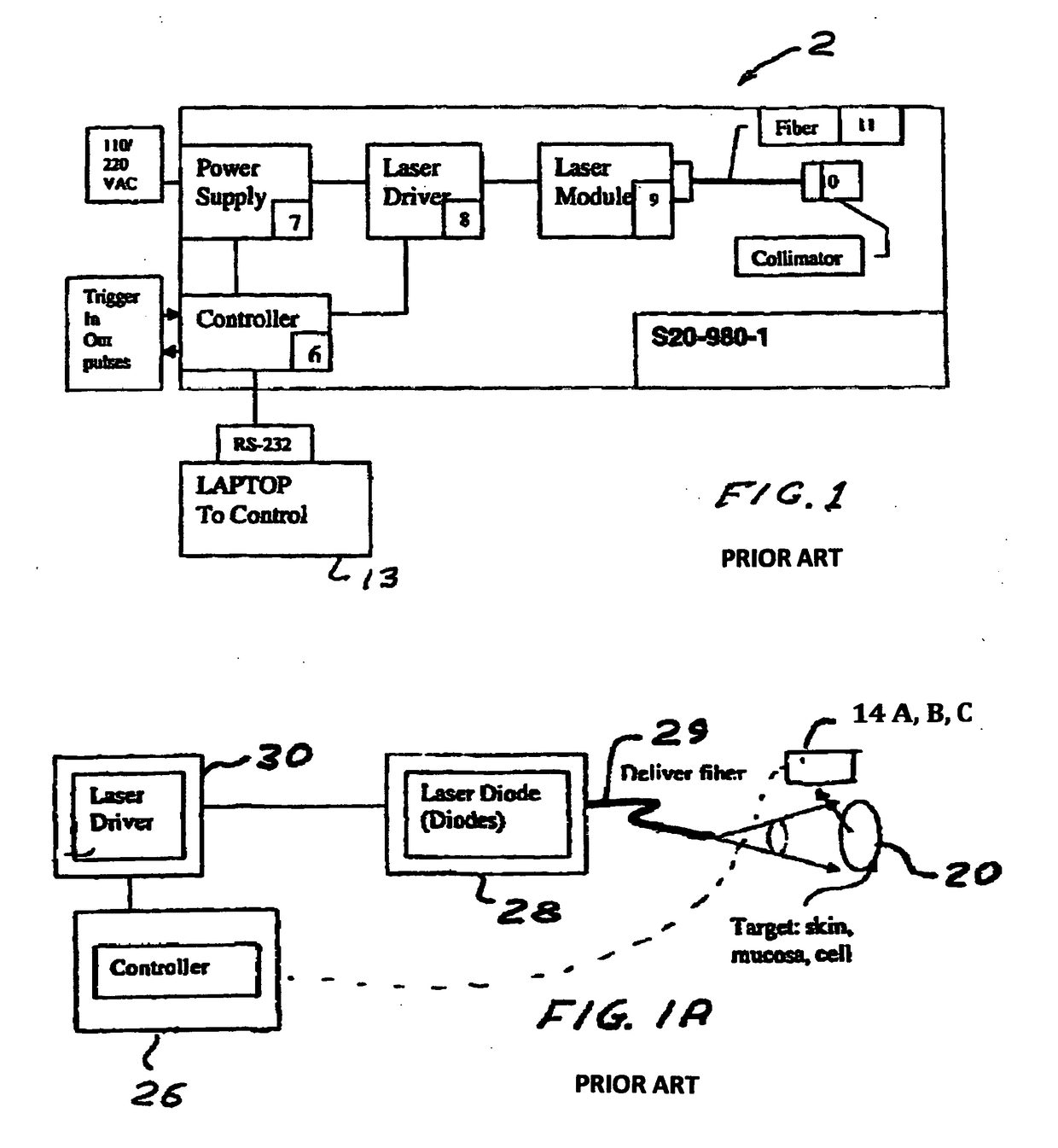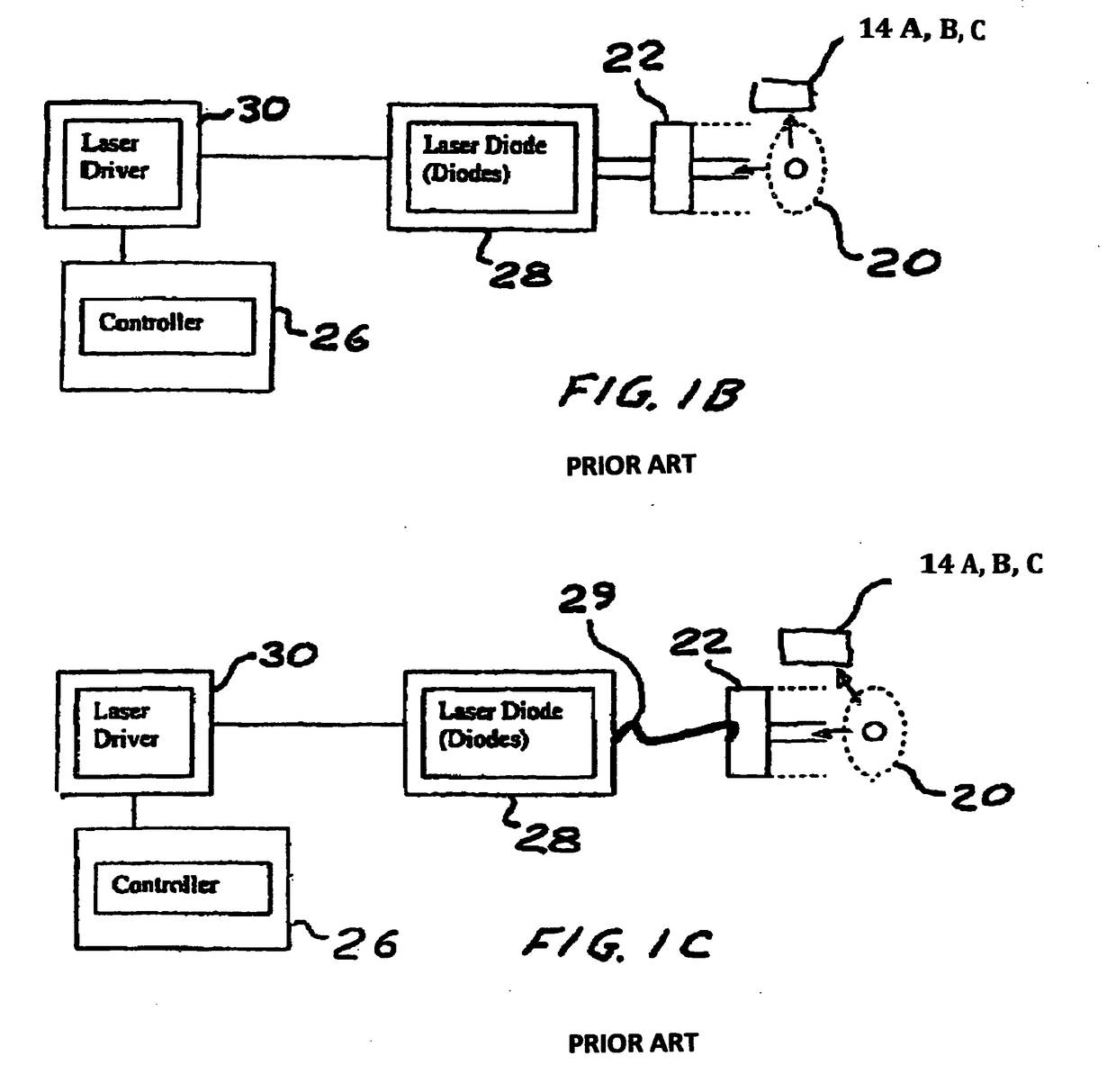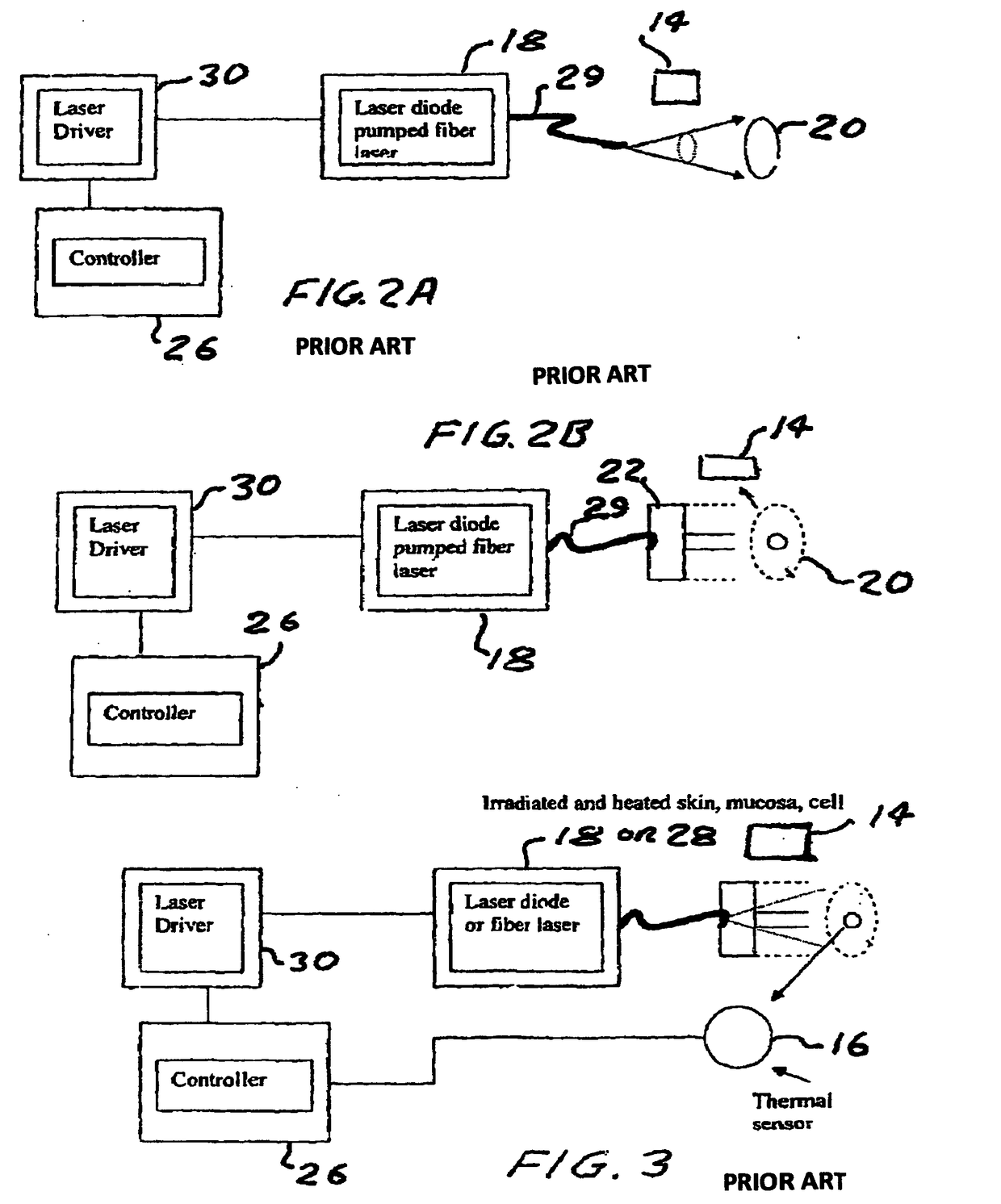Method and device to investigate or treat painful neuropathy
a neuropathy and neuropathy technology, applied in the field of medical instruments and processes, can solve the problems of chronic pain, enormous toll on human society, and loss of work, and achieve the effects of safe skin heat, better contrast, and induced neurogenic flare threshold
- Summary
- Abstract
- Description
- Claims
- Application Information
AI Technical Summary
Benefits of technology
Problems solved by technology
Method used
Image
Examples
example 1
of Selective Activation of C Mechano-Insensitive Fibers in Humans
[0088]To the best of Applicant's knowledge, there are not any prior art data in the literature relating to selective activation of CMi as well as activation of neurogenic flare without painful stimulation of CMH fibers. The best, simplest protocol, to assess CMi and activate neurogenic flare is the following:[0089]The best laser set up parameters for lasing of 980[0090]Pulse duration: 500 ms to 2 s,[0091]Beam size: 2 mm to 5 mm[0092]Power: 2-20 W sufficient for laser induced temperature from 45° C. to 55° C.[0093]Density of Energy Range: up to 10 mJ / mm2
[0094]The example of practical realization of the combination of pulse duration, beam size and laser induced temperature for reproducible activation CMi as well as short lasting (less than 120 sec) activation of neurogenic flare is shown in Table 1:
TABLE 1Example of Threshold of activation of CMi fibersStimulation of CMi fibers. Irradiated SpotDiameter 5 mm, Hair SkinPe...
example 2
Protocol of Selective Activation of C Mechano-Insensitive Fibers in Humans with Cooled Skin
[0100]The steps to define activation threshold of CMi in cooled to skin are similar to the described in the Example 1. The cooled skin mimic to some degree skin and pain sensitivity of patients with peripheral neuropathy who usually develop deficit of pain sensitivity due to decreasing density of pain mediated fibers mainly epidermal C polymodal. The surface cooling also numbs epidermal C polymodal fibers. The only difference is that approximately twice higher laser intensity is required to induce the same temperature that sufficient for activation of CMi fibers. Therefore in step #3 The pulse power is increased from 6 W compared to 3 W in non cooled skin.
Example 3 Protocol of Selective Activation of C Mechano-Insensitive Fibers in Pigs
[0101]
TABLE 2Example of Pain and Activation Thresholds ofCMi fibersStimulation of CMi fibers. Irradiated SpotDiameter 5 mm, duration 6 sec, intensity 2 W HairSk...
example “ 2
Example “2” Protocol of Selective Stimulation Single Warmth Sensation or / and Single Hot Pain, Activation of C Fibers
Warmth Sensation Stimulation
[0105]The best laser set up parameters for laser at 980 nm:[0106]Pulse duration: 300 ms to 20 s[0107]Beam size: 3-15 mm[0108]Power: 0.3-10 W[0109]1) A collimated beam with diameter 5 mm, power 1 W and pulse duration 5 sec is applied to investigate area of skin to determine the individual sensitivity of C nociceptors. The lasing is stopped when patient or volunteer report feeling either warmth or hot (burning) pain. The duration of applied pulse is measured. The procedure is repeated 2-3 times and after which the obtained pulse duration is used for the investigation of other areas. Every next pulse is applied to new area of skin if pain or other sensation has not disappeared.[0110]2) The expected pulse duration is between 300 ms and 5 sec. A 300 ms power is increased with step of 0.2 W until the appropriate sensation appears. If the sensation...
PUM
 Login to View More
Login to View More Abstract
Description
Claims
Application Information
 Login to View More
Login to View More - R&D
- Intellectual Property
- Life Sciences
- Materials
- Tech Scout
- Unparalleled Data Quality
- Higher Quality Content
- 60% Fewer Hallucinations
Browse by: Latest US Patents, China's latest patents, Technical Efficacy Thesaurus, Application Domain, Technology Topic, Popular Technical Reports.
© 2025 PatSnap. All rights reserved.Legal|Privacy policy|Modern Slavery Act Transparency Statement|Sitemap|About US| Contact US: help@patsnap.com



